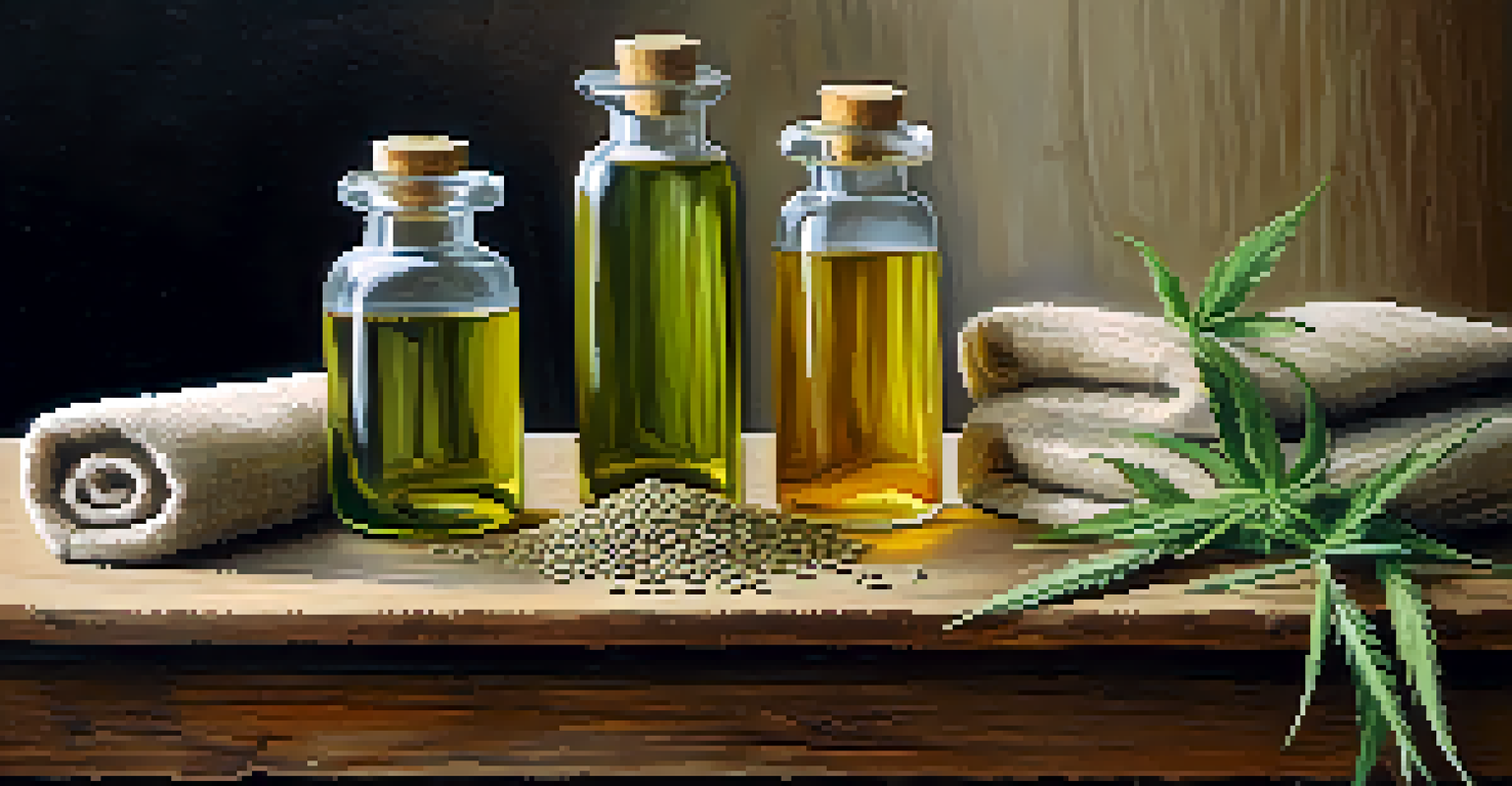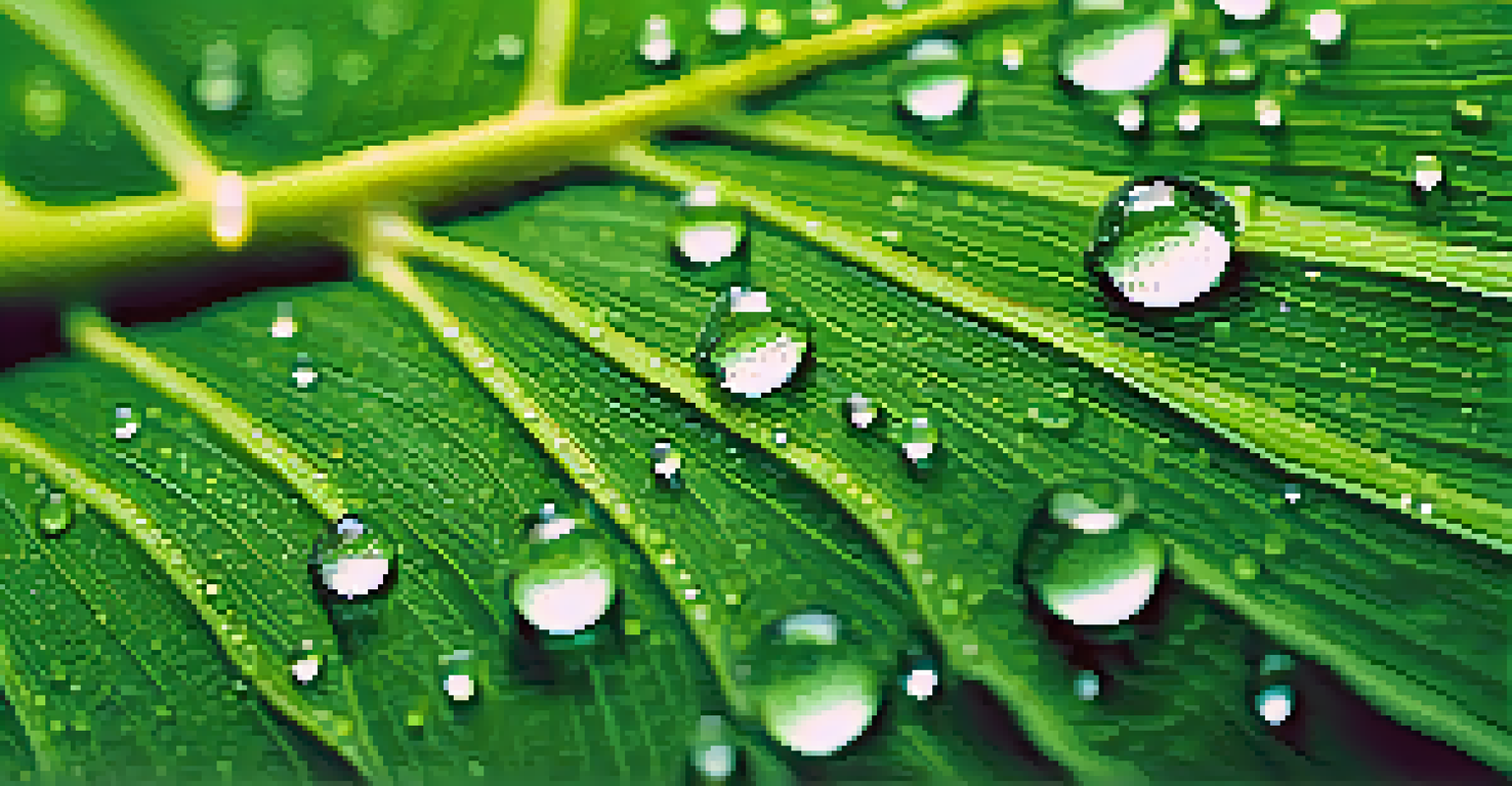The Evolution of Hemp: From Ancient Times to Modern Uses

Hemp's Ancient Roots: A Historical Overview
Hemp has been cultivated for thousands of years, with evidence dating back to ancient China around 2800 BC. It was used for various purposes, including textiles, rope, and even paper, showcasing its versatility. The plant's significance spread across cultures, becoming a staple in many societies due to its durability and usefulness.
Hemp is of first necessity to the wealth and protection of the country.
In ancient Egypt, hemp was used in the mummification process, while in India, it played a role in spiritual practices. This rich history highlights how hemp was not just a crop but a vital resource that contributed to the economy and culture of civilizations. Its early uses set the stage for its enduring legacy.
As trade routes expanded, hemp made its way to Europe and beyond, influencing agriculture and industry. The plant's ability to thrive in various climates helped establish it as a global commodity, laying the foundation for its modern applications.
Hemp in the Age of Exploration and Colonization
During the Age of Exploration, hemp became a crucial material for sailors and explorers. Ships were often made with hemp sails and ropes due to the plant's strength and resistance to saltwater. This utility made hemp a vital asset for maritime industries, contributing to global trade and exploration.

Colonial America saw a boom in hemp cultivation, as it was required by law in some colonies to grow the crop. Farmers quickly recognized its value not just for textiles but also as a cash crop that could be traded for other goods. This economic incentive further embedded hemp into the fabric of early American society.
Hemp's Rich Historical Significance
Hemp has been a vital resource throughout history, used in various cultures for textiles, spiritual practices, and even mummification.
As the world became more interconnected, hemp's use expanded beyond practical applications. It became a symbol of independence and resilience, reflecting the spirit of the times as nations explored new territories and resources.
The Decline of Hemp in the 20th Century
Despite its historical significance, the 20th century saw a dramatic decline in hemp cultivation, largely due to the rise of synthetic materials and changing regulations. The Marihuana Tax Act of 1937 effectively criminalized hemp production in the United States, leading to misconceptions about the plant. This shift resulted in a negative stigma surrounding hemp, overshadowing its numerous benefits.
The greatest service which can be rendered to any country is to add a useful plant to its agriculture.
As the world became increasingly reliant on plastics and petrochemicals, hemp was pushed to the sidelines. The lack of awareness about its environmental advantages and versatility contributed to its decline. However, the seeds of change were already being sown, as advocates began to recognize hemp's potential for sustainability.
The mid-20th century marked a turning point where the conversation around hemp started to evolve. Activists and researchers began to highlight the benefits of hemp for the environment and economy, laying the groundwork for a resurgence in interest.
The Renaissance of Hemp: A Modern Comeback
In recent years, hemp has experienced a remarkable resurgence, fueled by a growing awareness of its environmental benefits. As the world grapples with climate change and plastic pollution, hemp is being recognized as a sustainable alternative for various industries. Its ability to grow rapidly and require fewer resources makes it an attractive crop for eco-conscious consumers and businesses alike.
The legalization of hemp cultivation in many countries, including the U.S. in 2018, has opened the floodgates for innovation. Entrepreneurs are exploring hemp's potential in textiles, food products, and even construction materials. This newfound freedom has led to a wave of creativity, with hemp now being touted as a 'superfood' and a sustainable building material.
Hemp's Modern Resurgence
Recent legalization and increased awareness of hemp's sustainability have sparked innovation across industries, positioning it as a key player in eco-friendly practices.
Moreover, the wellness industry has embraced hemp-derived products, particularly CBD oil, which has gained immense popularity for its potential health benefits. This intersection of traditional uses and modern innovation is helping to reshape perceptions of hemp.
Hemp's Diverse Applications in Today's World
Today, hemp is celebrated for its versatility across a wide range of applications. From eco-friendly packaging and biodegradable plastics to textiles and paper, the plant offers sustainable solutions that align with contemporary values. Businesses are increasingly recognizing hemp as a viable alternative that can reduce their carbon footprint.
In the food industry, hemp seeds are hailed as a nutritional powerhouse, packed with protein, healthy fats, and essential nutrients. They are becoming a staple in health-conscious diets, featured in smoothies, granola bars, and even protein powders. This trend showcases how hemp can contribute to both personal health and environmental sustainability.
Moreover, hemp is gaining traction in the construction sector, with innovations like hempcrete—a sustainable building material that offers excellent insulation. This shift towards hemp-based construction reflects a broader movement towards sustainable living, making hemp a key player in the fight against climate change.
The Role of Hemp in Sustainable Practices
Hemp is increasingly recognized for its role in promoting sustainable agricultural practices. Its deep root system improves soil health by preventing erosion and enhancing nutrient retention. Additionally, hemp can be grown without pesticides or herbicides, making it a more environmentally friendly crop compared to traditional agriculture.
Furthermore, hemp absorbs carbon dioxide from the atmosphere, contributing to carbon sequestration efforts. This natural ability positions hemp as a potential ally in combating climate change. As more farmers adopt hemp cultivation, the positive environmental impacts could become even more pronounced.
Hemp's Role in Sustainability
Hemp promotes sustainable agriculture by improving soil health, reducing chemical use, and aiding in carbon sequestration, making it essential for eco-conscious consumers.
The rise of hemp in sustainable practices also aligns with consumer demand for eco-friendly products. As awareness grows, consumers are seeking out brands that prioritize sustainability, making hemp a key ingredient in the future of responsible consumption.
The Future of Hemp: Innovations and Trends
Looking ahead, the future of hemp appears bright, with ongoing innovations and research driving its potential. Scientists are exploring advanced agricultural techniques, such as vertical farming and precision agriculture, to optimize hemp cultivation. These advancements could increase yields while minimizing environmental impact, making hemp an even more attractive crop.
Moreover, the industry is witnessing a surge in hemp-based products, from cosmetics to biocomposites. Companies are investing in research and development to create new applications that leverage hemp's unique properties. This innovation is not just about profit; it's about creating a more sustainable future.

As legislation continues to evolve, the barriers that once hindered hemp's growth are gradually falling away. With a supportive regulatory environment and a growing market, hemp is poised to play a significant role in shaping industries while promoting sustainability and wellness.